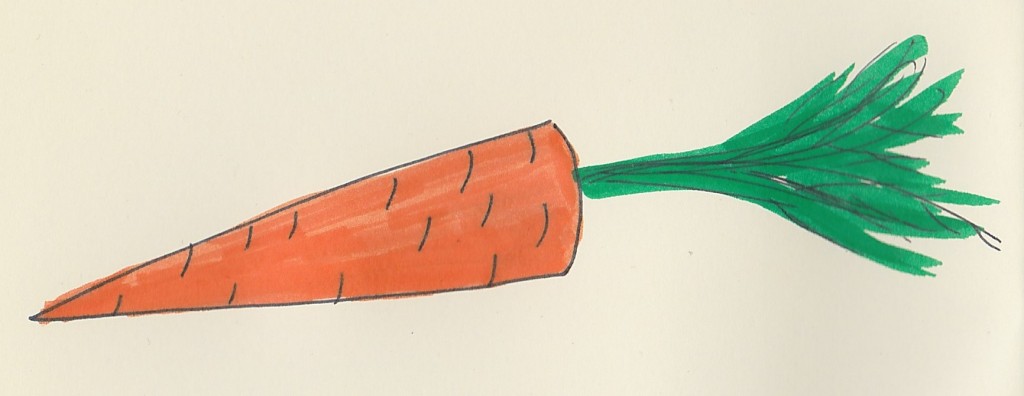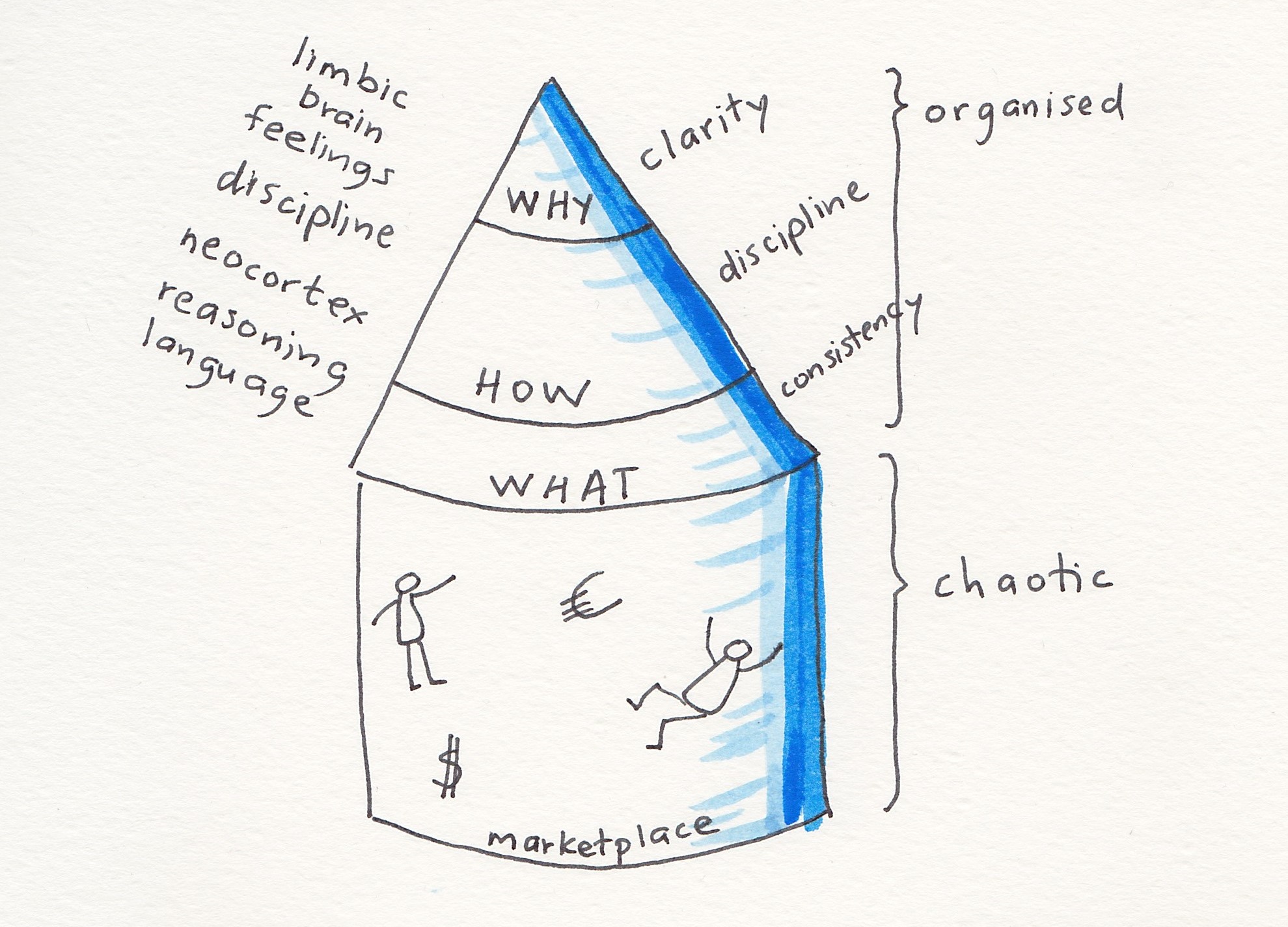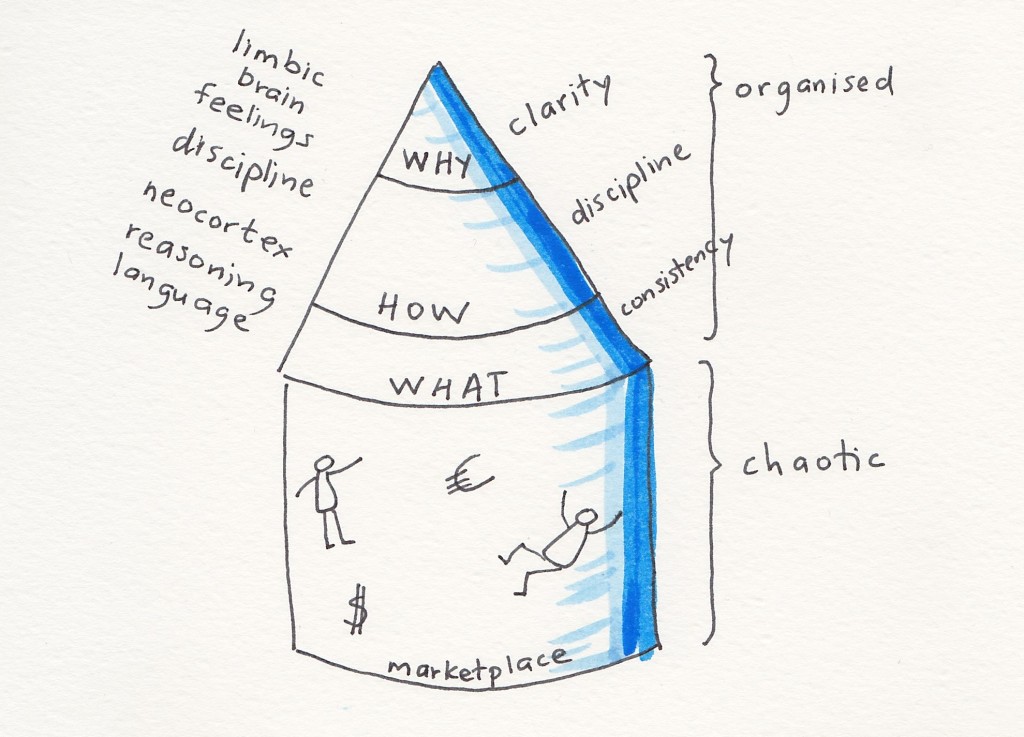A couple of weeks ago my colleague Mattias Nordin sent me a link to Simon Sineks TED talk Start with why. Since I am undergoing a slight shifting of careers at the moment - trying to figure out what I really want to do has occupied my mind for quite some time now. Taking a different angle to the question I decided to figure out WHY I want to do whatever I do. That question turned out to be fairly easy to answer.
I have a vision that the IT-systems I help build have smiling and content users. I want to spend my time making useful great tools instead of systems that make users swear, cry and feel bad!
Contrary to what would be reasonable to think - focus is still - in 2014 - very often more on single functions than actually solving a user´s need! Anyhow, the Ted talk inspired me enough to buy the book Start With Why which I spent the last few days reading and reflecting over. Here's a review:
Carrots and Sticks
For short term effects, manipulation in the form of price, promotions, peer pressure, fear, aspiration or novelty often works fine. You can get someone to buy your product or idea once. In order to buy the same thing repeatedly you have to repeat you carrot or stick procedure which becomes costly in the long run. Short term motivators does not build loyaly or repeat customers but works temporarily.

How the brain works
Your brain as well as mine work according to the laws of biology. The limbic brain is the center of feelings and also for decision making. Our neo-cortex is the center of reasoning, language and structured thinking. So the decisions we make are based on the feelings we have, not on the facts. We often try to rationalise our choices after they are made by claiming a structured decision process. The truth is probably closer to what Jerry Weinberg says (can't find the source at the moment, so much to choose from) - that "we make decisions not based on the facts but on what we feel about the facts" . That is also why we have a hard time putting words to our feelings, they reside in different places.
Another reflection is that if we all acted rationally all of the time - there would be no innovation, exploration or small companies. We need to act on feelings and inspiration in order to create something new. We most likely need some structure and rational thinking to make it work in the end.
Why, How and What - the Model
The top of the cone represents WHY. We need clarity on why a business is doing what it does, what are the dreams of thinkers like Martin Luther King and Mahatma Gandhi. Why did the do what they did? When we feel that our own felings resonate with the message given then we are willing to join, buy or offer our help. There are ample references in the book to Apple who according to the author are extremely successful in communicating and living their why. Their message could be something like this
Everything we do, we believe in challenging the status quo. We believe in thinking differently. The way we do this is by making our products beautifylly designed, simple to use and user friendly. We happen to make great computers,. Wanna buy one? (p 41)
The clue is the first two sentences where we find the why part. This is symbolized in the Apple case by Steve Jobs who made sure all employees and all buyers clearly understood Apples WHY.
The middle layer in the cone represents the how. This can be routines for doing things, having discipline and creating models. In order to have a fully functioning organisation we need some good HOW people.
The bottom layer is where it all happens. The WHAT part is what is usually easiest to identify - we build systems or computers. If all the people working here clearly understands the Why and the How - your company stand a much better chance of beeing successful!
Long-Term Success
The point Simon makes is that if we want to build loyalty with customers, employees or followers in general we have to know our own WHY and we also have to communicate it clearly.
A large part of the book is spent on discussing highly successful businesses as Apple, Southwest Airlines, Wal-Mart and Starbucks. As long as these companies knew and followed their Why - they were successful. When their great leaders quit and Why got fuzzy or disappeared then the profitability and success diminished rapidly. I have seen the same thing happening over and over again when smaller It-companies with a strong sense of Why and loyal employees are bought by IT-giants and their sense of Why is replaced by profitability calculated in numbers. This has the effect that profits become lower and employees are unhappy and the inevitable happens - customers are becoming unhappy as well.
So in order to make a profit you have to start with happy and well performing employees that share the Why of the leader, that in turn means that your customers will be happier when they are served by loyal and motivated people. As a reward you will get a profit! Try to do it the other way around and focus on profit - employees will be unhappy and treat customers worse...yes, as you guessed, profits diminish. Ths seems to be the dominating business model of today.
My Reflections on The Book
I think it was a fairly easy read although a bit repeatable in some parts. It was interesting to dig a bit deeper into Simons message which I by now totally buy - not for his sake but for my own. He inspires me to inspire others. I guess he started with Why!
A lot of the same ideas can be found in Ricardo Semlers thoughts - making sure everyone knows why they are working and using the power if the individual. The Toyota Way to Lean Leadership also has valid points along the same lines. A clear why and a wish to serve the world paired with respect for the individual.
I think the impact mapping technique is very well aligned with this book as well as the Lean UX movement. They both focus on WHY we are building something - we want to solve a real user´s real problem. A pretty good why to start with I think.
So do I recommend the book? Yup, start with the TED Talk and then read the book to dig deeper. Then spread the message if you feel inspired to do so.

